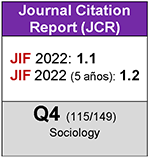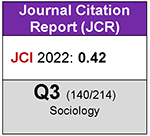Elderly Who Live Alone: An Overview Based on the 1991 and 2001 Censuses
DOI:
https://doi.org/10.5477/cis/reis.144.139Keywords:
Population Change, Population Characteristics, Census, Europe, Elderly, Living arrangementsAbstract
This article analyses the development of single-person living arrangements
amongst unmarried people aged between 65 and 84 years old who did not live
with a partner between 1991 and 2001 in seven European countries (Spain,
France, Greece, Hungary, Portugal, Romania and Switzerland). To do so, census
micro data provided by IPUMS (Integrated Public Use Microdata Series) were
used. The role of fi ve variables with regard to the probability of living alone versus
living with others was examined. It was investigated whether the observed
development was due to changes in the population composition. Logistic
regression was used as a standardisation technique with the census data.
Results showed that, after controlling for all the variables, the observed regional
patterns remain the same, and that the proportion of elderly living alone increased
in 2001 in all countries but Romania where, if the population composition had not
changed, this proportion would have diminished. The demographic structure (by
gender, age and marital status) did not signifi cantly modify the observed
proportions either over time or at a regional level. In contrast, the variations of
the structure regarding the socio-economic variables (educational level and
employment status) were key to explain part of the observed change.
Downloads
Downloads
Published
How to Cite
Issue
Section
License
Copyright (c) 2024 Revista Española de Investigaciones Sociológicas

This work is licensed under a Creative Commons Attribution-ShareAlike 4.0 International License.
Permite Compartir — copiar y redistribuir el material en cualquier medio o formato, Adaptar — remezclar, transformar y construir a partir del material para cualquier propósito, incluso comercialmente.








